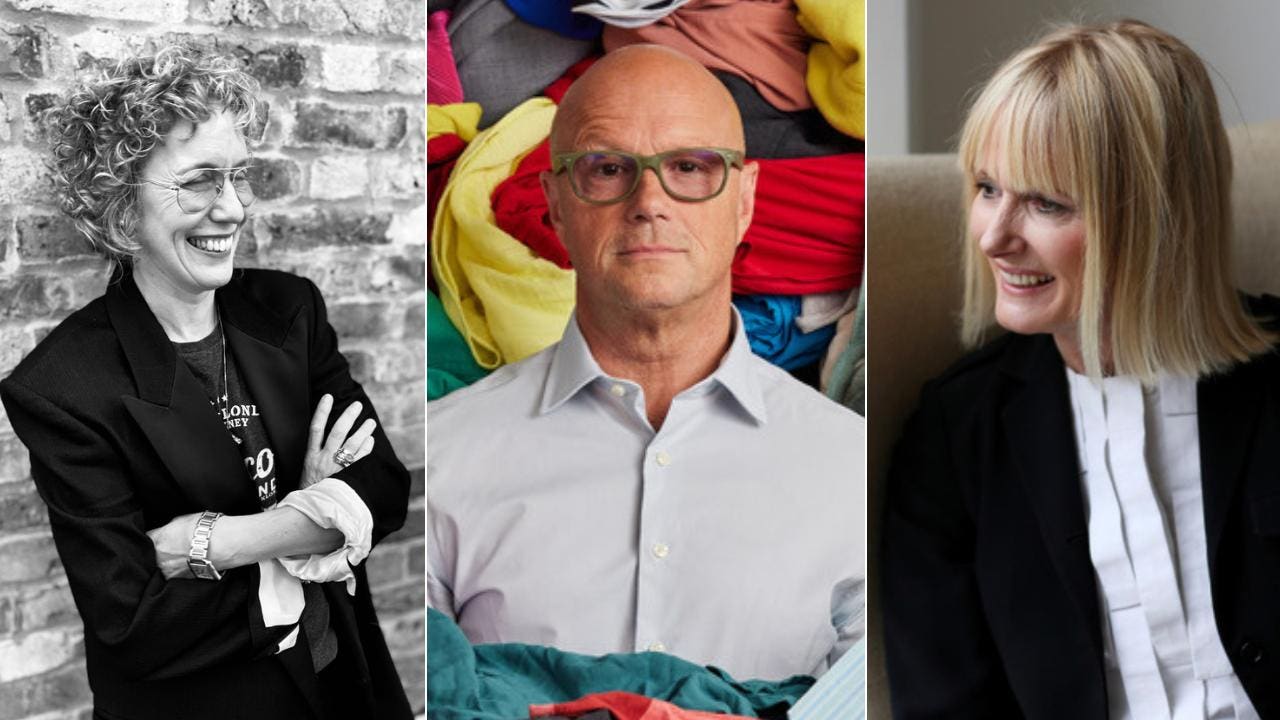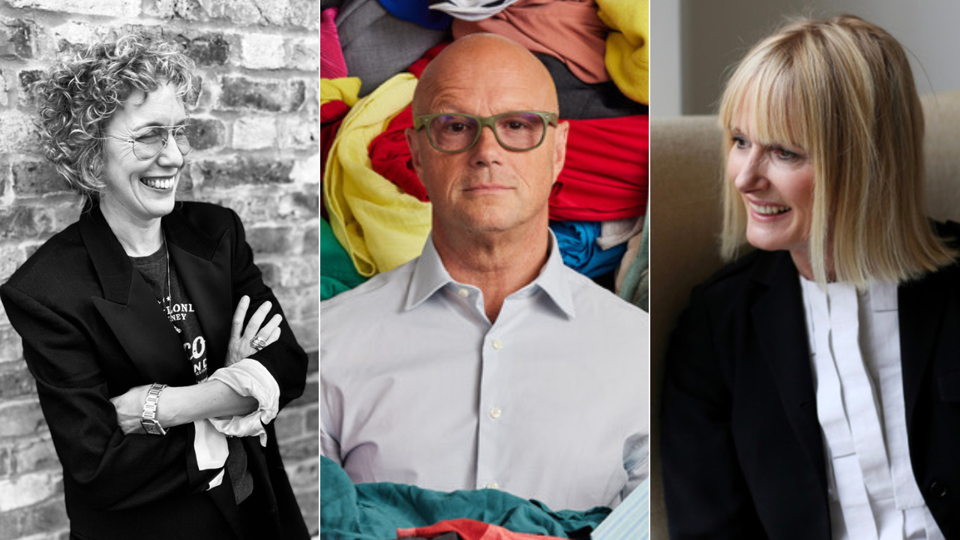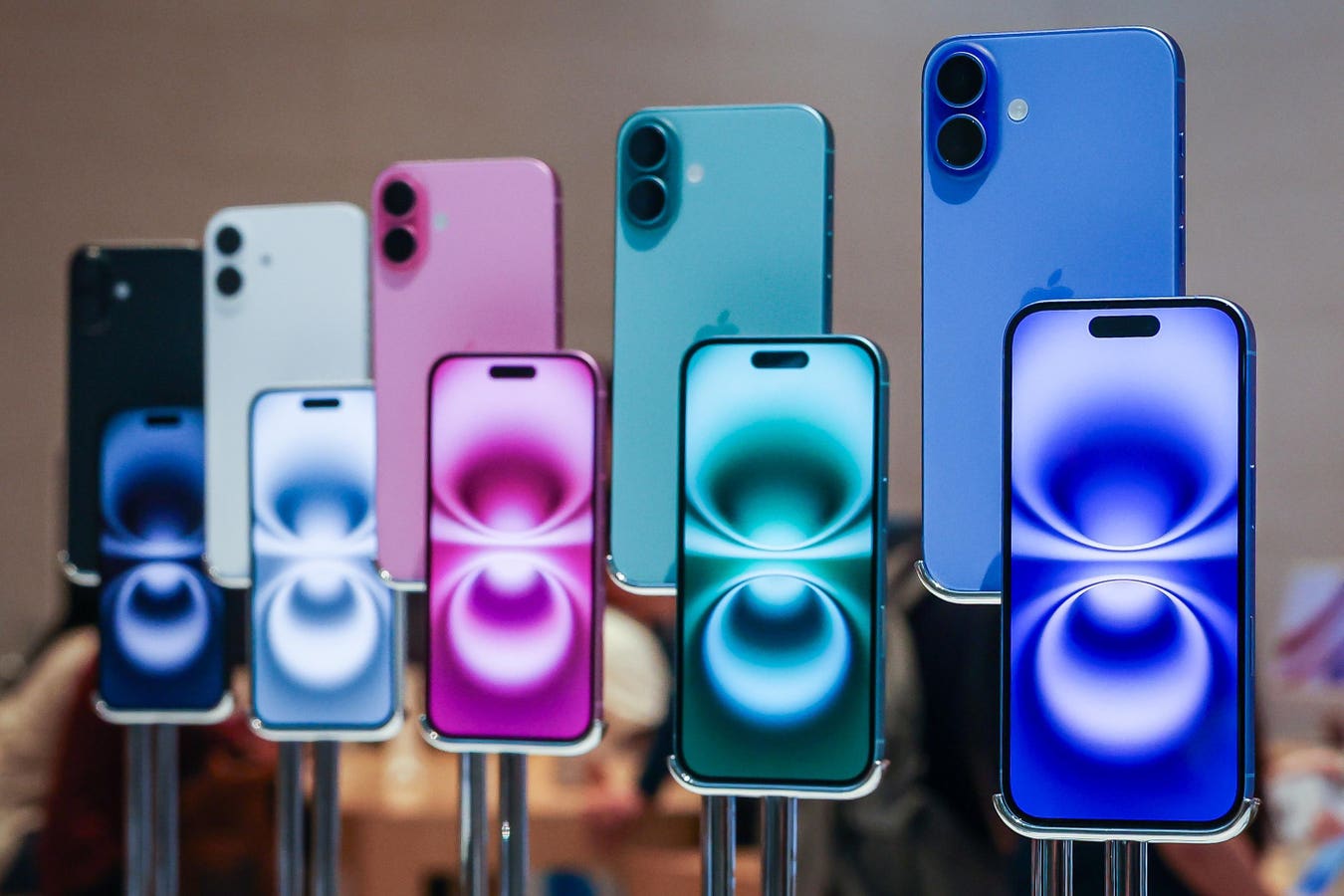Gemma Metheringham, Patrick Frisk and Jane Shepherdson worked for some of the biggest fashion brands … More
“I fully accept that I am a huge hypocrite,” Jane Shepherdson CBE, the woman once dubbed the most influential person in British retail, tells me on a video call.
Shepherdson transformed British mainstream retailer Topshop into a fashion powerhouse in the 2000s. These days, she is turning her expertise towards building a sustainable future for fashion by supporting disruptors. She is chair of rental platform My Wardrobe HQ, sits on the board of charity Smart Works and is director of the London Fashion Fund which invests in social-purpose startups.
“I was a part of this awful machine. But what can you do? I could have stayed in it, and I could feel even more guilty and full of shame, or you can get out,” Shepherdson says.
She’s not the only fashion executive turning their boardroom expertise towards sustainability. I spoke with two other industry veterans on their move into remodeling fashion and how they see the future.
Shifting To A Sustainable Mindset
Patrik Frisk, former CEO of Under Armour and footwear specialists ALDO Group, joined textile recycling company Reju as CEO in 2023.
While Frisk was at Under Armour, the brand was finding solutions to make its products recyclable, but, simultaneously, its recycled polyester was sourced from PET bottles. Seeing the need for truly circular, textile-to-textile recycling, Under Armour engaged in a joint venture with IBM and Technip, the parent company of Reju, to scale polyester recycling facilities. As Frisk’s tenure at Under Armour came to an end, he was invited to continue the work at Reju.
“I don’t need to do it. I want to. I want to make a difference,” Frisk told me in an interview. “I love the industry, and I want to try to help it transition into something new in a better place.”
Is there a part of him that was also motivated by guilt? “I feel a little bit of regret that I didn’t think harder about it earlier,” says Frisk of the environmental impact caused by fashion consumption.
Gemma Metheringham spent 17 years at British womenswear label Karen Millen, working her way up to chief creative officer and executive board member. She now works as an educator while studying for a PhD researching the secondhand clothing market.
“What was incredibly painful for me was I fell out of love with the fashion industry,” she told me via Zoom. “It was a bit like the ending of a relationship.”
A shift in market conditions changed how Metheringham saw her job. “I started feeling like, probably in the early 2000 and 2010s: the market’s oversaturated. There’s just too much stuff and rather than it being about making beautiful clothes that people need or want, it started becoming more and more about selling stuff to people.”
Looking to explore these issues further she turned to Instagram, starting @the_elephant_in_my _wardrobe in 2020 to ask questions and connect with others. She soon realized she had a lot more questions than answers and decided to return to university. “I wanted a complete break so that I could get some perspective,” she said.
Topshop was King of the British High Street in the 2000s with era-defining moments such as its Kate … More
Shepherdson had a similar realization while working alongside one of Britain’s most notorious businessmen, Philip Green, who has been embroiled in numerous controversies across his career. Shepherdson left Topshop amid their growing difference of approach to the business. “I had been ground down by Philip’s desire to constantly be making more and more money out of it and being a thing that was just about commercial success, and not about credibility.”
Shepherdson joined midmarket brand Whistles as CEO in 2008. A much smaller brand with a less trend-focussed approach. Shepherdson was keen to try and adopt a sustainable and ethical approach to the business: “We didn’t get as far as we wanted to. I see very, very, very few fashion brands, even nowadays, who have got to that stage. It’s a very difficult thing to do, there’s a lot of work to be done” she told me. “I left Whistles in 2016 because I thought: I can’t do this anymore. As much as I love it, I can’t do this because of the environmental impact.”
Where Is The Opportunity in Sustainable Fashion?
While all striving to better the industry, Frisk, Metheringham and Shepherdson are each approaching sustainability differently in this new phase of their careers.
For Frisk, textile recycling presents an opportunity to not only reduce waste but derisk fashion businesses. He told me: “If I were CEO for a textile-based brand today, I would be very thoughtful about: how will I be able to grow in the future if I don’t have access to materials like this in a constrained world?”
Reju launched at the end of 2023 and in October 2024 it opened its first textile-to-textile regeneration hub in Frankfurt, Germany. It has plans to open two further regeneration hubs, one in the Netherlands and one in the US, with capacity to produce 50,000 tons of recycled polyester every year. Their ambition is that by 2034 they will produce between four and five million tons, 4-6% of the world’s polyester supply.
Reju plans to build facilities capable of processing 50,000 tons of recycled polyester per year
After Shepherdson left Whistles, she considered launching her own brand or retail hub for sustainable brands, but thought it would be too challenging to find suppliers that met her standards at that time.
Tempted by the allure of rental as a way to maintain fashion’s creative side while lowering impact, she joined MyWardrobe HQ. The business has had moderate success but Shepherdson doesn’t see it as the sustainable breakthrough she hoped it would be “Rental isn’t the answer. It’s there. It exists, but I don’t think anyone is going to really crack it at scale,” she says. “We do okay [at My Wardrobe HQ], but we sell stuff. You can rent, or you can buy stuff, and most people actually want to buy it.”
Through the London Fashion Fund, Shepherdson has been able to back innovations for fashion businesses, which she sees as having more impact than trying to shift consumer behavior. Recipients include Mattera, a regenerative cotton programme in India, and green claims compliance company Compare Ethics.
Metheringham’s studies led her to the conclusion that the secondhand market is key to solving the sustainable puzzle, but it’s still not without its challenges “The secondhand market is really only a source of sustainability if the clothes we buy in the secondhand market actually displace, replace and stop businesses in the first-hand market making more new clothes. That’s the tipping point and I don’t know how we get there,” she says.
Metheringham says her new path in academia has given her the space to develop her critical thinking skills, something she believes more people in the industry could benefit from as it seeks to remodel itself. “When you’re working, you’re much more about convincing, communicating, and to some degree, selling your ideas. This idea of critiquing things and looking underneath and around the sides. That’s been challenging, but really, really interesting.”
In a fast-paced industry like fashion, these executives know all too well that a moment to pause and reflect can be hard to find. There’s no one silver-bullet solution to reduce fashion’s environmental footprint, it’s going to take multiple solutions and multiple talents, from the C-suite to the factory floor, but the first step, as Metheringham says, is taking a step back: “What we all need to do is open our eyes and think a little bit more about stuff. If we all do that, that’s what will make a difference.”









